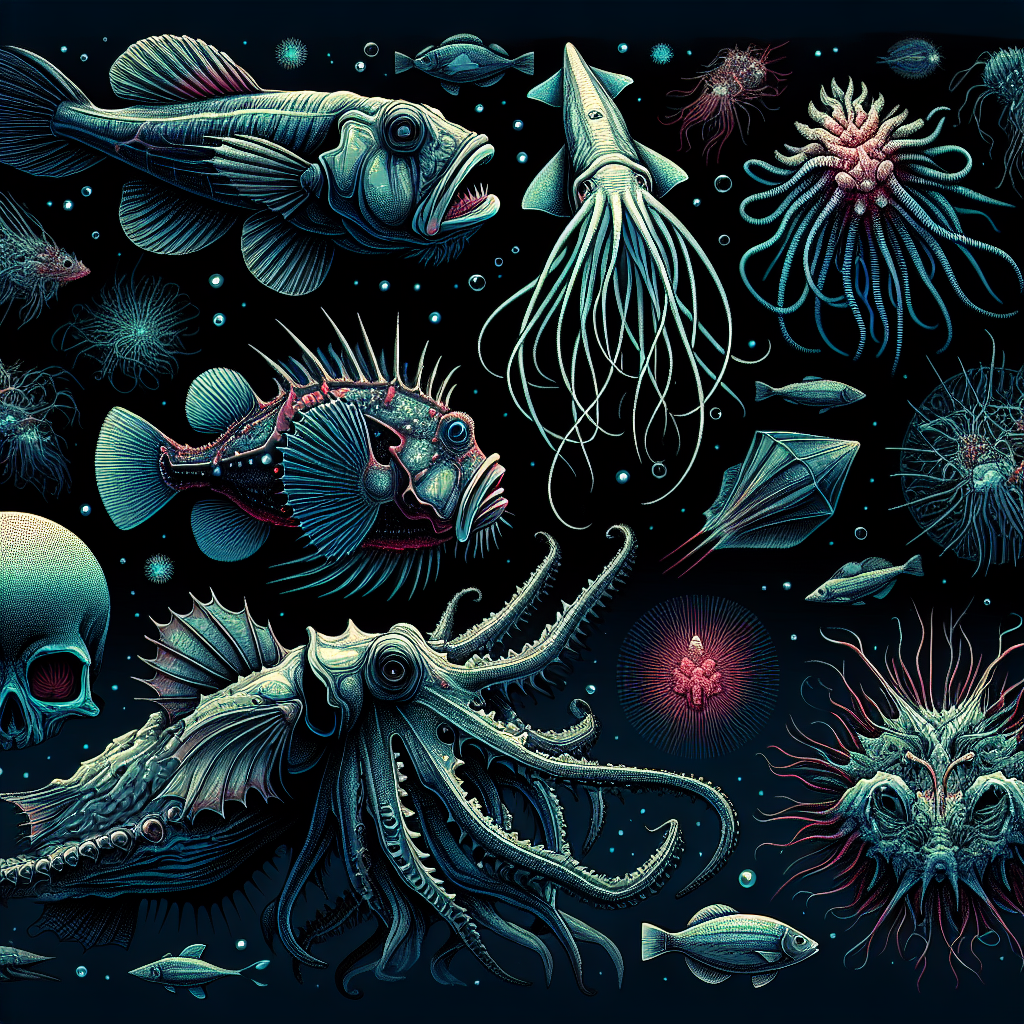Deep Sea Creatures: A World Beneath the Waves
Imagine a world flourishing with creatures so alien they defy imagination. This is not a scenario from a science fiction book, but the reality of our own oceans. Remember, the greater part of our planet is covered by water, with much of the ocean floor yet to be explored. What we’ve discovered so far is fascinating. Let’s delve deeper into the depths of the ocean to explore some of the most astonishing deep-sea creatures.
Facts about the Giant Squid
The giant squid has long held an aura of mystery and fear due to its extraordinary size, with the largest recorded specimen being 43 feet long. The creature’s eyes are equally impressive, being the largest of any known animal, reaching sizes of up to 10 inches in diameter. Its diet mainly comprises of deep-sea fish and other squids. Interestingly, although widely distributed across the world’s oceans, giant squids were first captured on camera alive only in 2002.
Understanding the Anglerfish
Dive deeper into the abyss and you may encounter the eerie glow of the anglerfish. This fish lures its prey with a glowing apparatus called an esca, located on a dorsal spine. The bioluminescence is a product of symbiotic bacteria living within the esca. Another interesting fact about this deep-sea dweller is the drastic difference between males and females. Males are significantly smaller and once they find a female, they latch onto her, eventually fusing and sharing her circulatory system.
Unfolding the Mysteries of the Goblin Shark
The goblin shark is a deep-sea predator known for its distinctive elongated nose, or rostrum, and its unique method of catching prey. It has a remarkable jaw that can extend out of its mouth to capture prey. The goblin shark’s recognizable pinkish color is due to blood vessels showing through its skin, which lacks pigmentation. Despite its seemingly terrifying appearance, goblin sharks pose no threat to humans, given their deep-sea habitat.
Freaky Facts about the Viperfish
The viperfish’s impressive, needle-sharp teeth are the largest in proportion to its head among all fish. These ferocious predators use their fangs to catch prey, while their bioluminescent bodies serve a dual purpose: attracting prey and communicating with potential mates. Viperfish are capable of surviving in extremely harsh conditions, attributable to a large liver that stores oils providing energy during food-scarce periods.
The Barreleye Fish: A Window into the Deep Sea
The barreleye fish, also known as the spook fish, boasts of one of the most unique features in the animal kingdom – a transparent head. Their barrel-shaped, upward-facing eyes look through a clear dome that allows them to scour for potential prey. These eyes are incredibly sensitive to light, which is essential in the perpetual darkness of the deep ocean.
More than Meets the Eye: Bioluminescent Sea Creatures
The deep sea is dark, colder than an average fridge, and inhospitable. Yet, many creatures have evolved to live in these harsh conditions. Bioluminescence- the ability to produce light through a chemical reaction – is a common trait among deep-sea creatures. From squids to shrimp, octopus, and fish, many sea inhabitants use this feature for defense, hunting, and communication. Others use it to attract mates or lure prey.
Theese Creatures Survive Against All Odds
Deep-sea creatures continuously withstand extreme conditions that would be intolerable to most other forms of life. They face unimaginable pressures, complete darkness, and freezing temperatures. Yet, they have evolved incredible adaptations to not only survive but thrive in their oceanic home.
Learning about deep-sea creatures never ceases to amaze. Behind the intimidating appearances of many of these creatures lie fascinating survival strategies and unique biological features that raise even more curiosity about the unexplored depths of our oceans. The deep sea may seem like a different planet, but the truth is, it’s right here on Earth, and there’s much more to discover.
